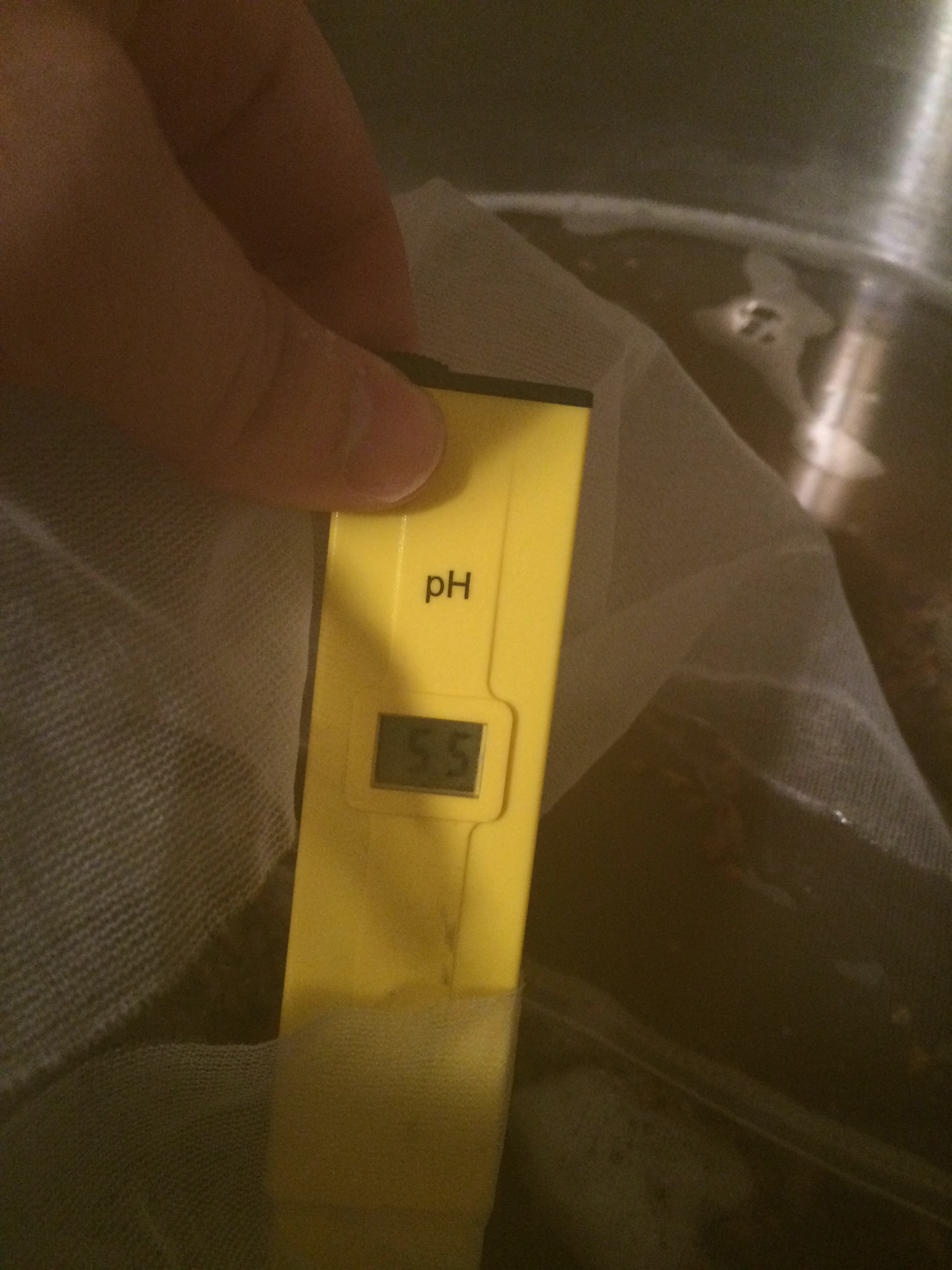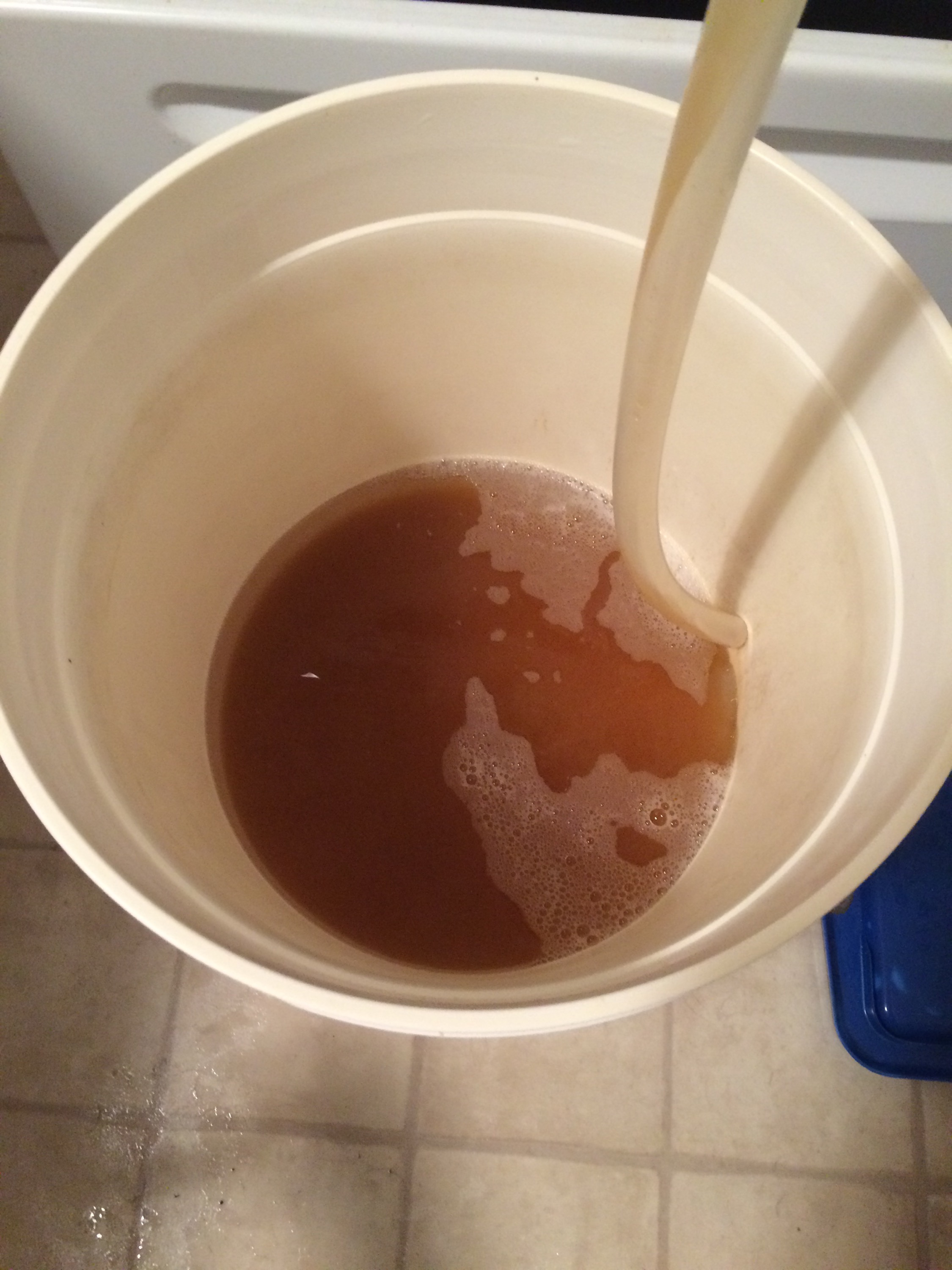 |
| My last hefeweizen. The high carbonation gives the beer a thick, rocky head. |
American hefeweizens like Widmer Brothers Hefeweizen and Harpoon UFO Hefeweizen use American yeasts with a much cleaner flavor profile. Stylistically they belong in the American Wheat category.
I have brewed two hefes in the past. The first was an extract version that came out quite dark because Wheat Liquid Malt Extract is dark in and of itself. My second attempt was a partial-mash which was lighter. The problem with both beers is that I ended up with gushers and bottle bombs. The cause was likely adding too much priming sugar at bottling. Reviewing my notes, the first batch may not have been done fermenting when I bottled it after only seven days. Some of the online priming sugar calculators suggest that the beer should have 3.6 vol of CO2. In my experience even if you use a strong enough of a bottle to hold that much pressure, the beer will be so over-carbonated that the best case scenario is that you end up pouring foam and waiting for it to settle.
I attempted to make sure the second time around the carbonation was not as high as our first batch. I was able to enjoy a few before they became geysers. When I revisited the recipe I saw I had two types of hops and three hop additions for a beer with essentially no hop flavor. I don't remember exactly what I was thinking so I decided to go back to the drawing board.
My first reference was Brewing Classic Styles. The book has tips for every style of beer and award winning recipes. This seemed like a good time to brew one of the recipes from the book. I took co-author Jamil Zainasheff's "Harold is Weizen" recipe and tweaked it to fit my system. Instead of using German hops I used leftover Mt. Hood hops, which while American, has a German lineage and flavor. When I didn't have quite enough Mt. Hood to provide sufficient bitterness, I supplemented them with some Glacier. For a beer without a lot of hop flavor it should be fine. I used German Pale Wheat Malt, German Pilsner malt, and wheat extract for the grist. I added half a tsp of gypsum to make sure there was enough calcium in the water. Out of laziness I didn't make a yeast starter, but for a beer of this strength I think it will be fine with just the smack pack.
 |
| Checking my mash pH. It is a little high. Next time I'll add a couple ounces of acidulated malt. |
I do remember my previous hefeweizens being more phenolic than estery, Jamil suggests the beer ferment at a cool 62F. With a swamp cooler setup like I used when I brewed The Sustenence I should be able to ferment in that range. With the warm weather already here I'll probably have to use it for all of my batches until I brew some Belgian styles during the summer.
 |
| The beer will look more like the color of the wort in the tubing in the upper right, than the darker wort gathering in the bucket. |
I brewed this on a Wednesday night to make sure the beer is ready for the Northshore Brewers June meeting. I rejoined the club back in January where we went on a tour of Cape Ann Brewing. We have since missed the February and March meetings. The June meeting is a style meeting for German wheat beers, where members discuss the style while sampling homebrewed and commercial examples. As I wanted to brew this beer beforehand, this worked out perfectly. What I will do is fill one of my Party Pig mini-kegs to bring to the meeting and bottle the rest.
I didn't start brewing until 7:00 p.m. and finished up around midnight. I think if I brew on a weeknight again I'll start earlier, make sure the boil is only 60 instead of 90 minutes, or stick to extract.
Follow me on Instagram @wouldbebrewmaster
Like The Would-be Brewmaster on Facebook
Share what beers you are drinking with me on Untappd
Hot Corner Hefeweizen 2.0
Weizen & Weissbier
My Equipment
70% efficiency
Vitals
Original Gravity: 1.050
Final Gravity (Fixed): 1.013
IBU (Tinseth): 12
BU/GU: 0.24
Color: 4.8 SRM
Mash
Temperature — 149 °F — 60 min
Malts (5 lb 10 oz)
3 lb (34.2%) — Wheat Malt — Grain — 2 °L — Mash
2 lb (22.8%) — Pilsner 2-Row — Grain — 2 °L — Mash
8 oz (5.7%) — Weyermann Carahell — Grain — 10.2 °L
2 oz (1.4%) — Acid Malt — Grain — 2.8 °L
Other (3 lb 2.4 oz)
3 lb 2.4 oz (35.9%) — Northern Brewer Wheat LME — Liquid Extract — 3.5 °L — Flameout
Hops (2 oz)
0.5 oz (6 IBU) — Haulertau Germany (Germany) 4.3% — Boil — 30 min
0.5 oz (4 IBU) — Haulertau Germany (Germany) 4.3% — Boil — 15 min
1 oz (3 IBU) — Spalter (Germany) 4.3% — Boil — 5 min
Yeast
1 pkg — Wyeast Labs 3638 Bavarian Wheat 76%
Miscs
8 oz — Dextrose — Bottling
No comments:
Post a Comment